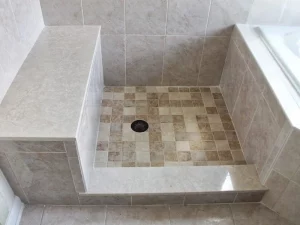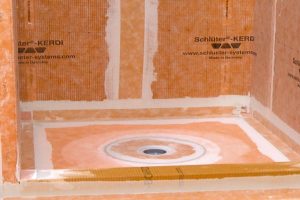How To Waterproof A House
Waterproofing your home is essential in keeping the elements and water from outside from penetrating into your home. There are three major points to keep in mind when it comes to waterproofing your home, with the first being the most crucial and it covers 90% of waterproofing situations.
The first step in waterproofing your home is to paint your house regularly. If you have a new construction home, it’s best to paint it within the first five years, as the paint used by builders can be of low quality. It simply needs to be put on the walls but often has very little paint and is sprayed, leading to a thin coat. Painting your house regularly creates a protective coating that helps seal the siding of your home from the elements.
The next step is to fill any cracks that develop around your home. For example, if you have a stucco home, fill any cracks you see with silicone caulking to prevent water from getting in. Don’t leave cracks open, as this allows water to penetrate and cause damage.
Checking your windows and doors for a tight seal is also important in waterproofing your home. Many homes have beautiful wood floors, but if the doors aren’t sealed at the bottom, a driving rain can come in and cause damage to the wood. Installing weather stripping and under door seals or gaskets can help prevent this from happening.
In addition to the above, there are a few more steps you can take to further waterproof your home. Installing a membrane around the foundation of your home, such as a dimple mat, will prevent water from seeping into the ground and potentially entering your home. Another option is to install gutters and downspouts, which will redirect rainwater away from the foundation of your home.
Another important step is to maintain the grading around your home. This involves making sure that the soil slopes away from your home, so that water does not flow towards it. A retaining wall may also be necessary if you have a steep slope that is causing water to pool around your home.
Inspecting your roof regularly is also essential in waterproofing your home. This means checking for any cracks, holes, or missing shingles, and making necessary repairs. You should also make sure that the flashing around your roof and chimney is securely in place, as this will help prevent water from entering your home through the roof.
Another important aspect of waterproofing your home is ensuring that your windows are properly installed and caulked. Any gaps or cracks around your windows should be filled, as this will prevent water from entering your home through the windows. If your windows are old and worn, consider replacing them with new, energy-efficient windows that are properly sealed.
Lastly, it’s important to be mindful of the plants you have around your home. Plants that are too close to your home can cause water to pool around the foundation, which can lead to water damage. Trimming back any overgrown plants and keeping them a safe distance from your home will help prevent this from happening.
In conclusion, waterproofing your home is essential in keeping the elements and water from outside from penetrating into your home. From painting your house regularly, filling cracks, checking windows and doors for a tight seal, to maintaining the grading around your home, there are several steps you can take to ensure your home stays dry. By taking these steps, you can prevent water damage and keep your home in top condition for years to come.

 Previous Post
Previous Post Next Post
Next Post


